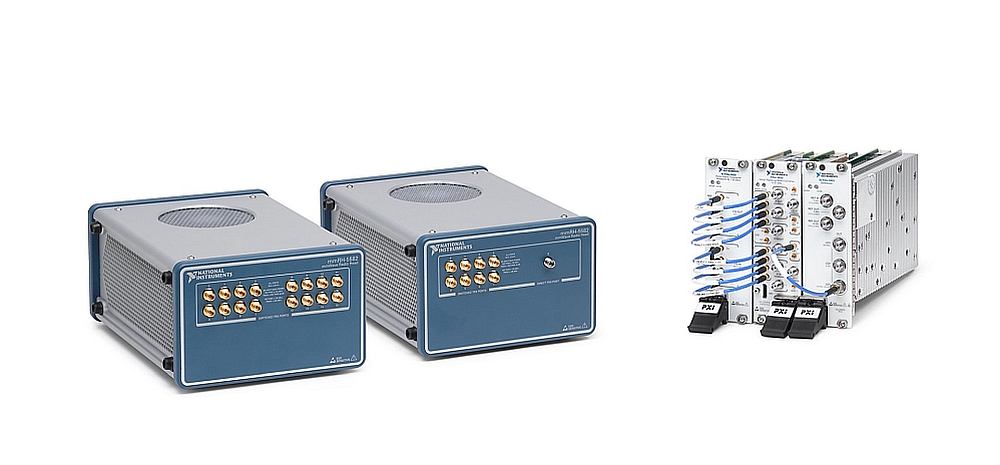- National Instruments announced the PXIe-5831 vector signal transceiver (VST) to cover X-band, Ku-band and Ka-band applications.
National Instruments (NI) announces expansion of vector signal transceiver product family to cover, with expanded coverage up to 44 GHz, X-Band through Ka-Band applications for design, validation and test of radar and SATCOM devices.
In order to prototype, validate and test radar and communication systems at higher frequency bands, the PXIe-5831 VST with modular millimeter wave (mmWave) heads expands the VST product family to provide frequency coverage up to 44 GHz. It delivers 1 GHz of instantaneous bandwidth for generation and analysis and features a FPGA, so users can perform optimized measurements, inline signal processing and high-speed data transfer.
“When the first VST was released in 2012, it revolutionized the way high-performance RF test sets were developed, offering the dependability of calibrated RF measurements, the flexibility of user-programmable inline processing and the ability to program in LabVIEW or leverage existing VHDL IP,” said Luke Schreier, vice president and general manager of NI’s aerospace, defense and government business. “By extending that capability to even more radar and SATCOM frequencies, we are helping address the schedule, cost-of-test and quality issues inherent in the development of complex transmit/receive systems. As a company, we also gain significant technology leverage between these applications and the commercial 5G sectors, which enables us to more efficiently support the product.”
The PXIe-5831 combines the PXIe-5820 baseband VST with the PXIe-3622 vector signal upconverter/downconverter for direct RF generation and analysis from 5 to 21 GHz. Modular mmWave heads further expand coverage to include frequencies from 23 to 44 GHz with integrated and calibrated switching for up to 32 channels. This enables multichannel beamformer and phased-array measurements without the need for additional infrastructure.






